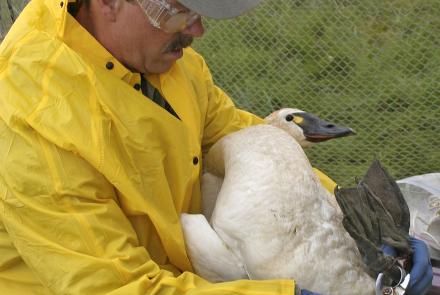
Messages in a Raven Rattle
Recently I had the chance to spend an afternoon in the Museum of Anthropology at the University of British Columbia, home of a splendid collection of Pacific Northwest Native art. It's a place worth a pilgrimage. The spectacular building, designed by Canada's famous architect Arthur Erickson, echoes themes borrowed from a Haida longhouse; it's constructed so that one gallery is tall enough to house full-size totem poles.
Despite the magnificence of the many gigantic carvings, my attention kept turning to carvings of a smaller sort--the raven rattles. Superbly detailed, always beautiful though often highly stylized, these captivating objects looked to my untrained eye like variations on a theme, but I couldn't decipher what the theme actually was.
Fortunately, I found a slim publication at the museum gift shop: The Raven Rattle, UBC Museum Note No. 6, by Marjorie M. Halpin. From it, I learned much about raven rattles and what some specialists think they mean.
The first one known to the outside world was acquired by the Russians from Alaska Tlingits in 1804, but tradition among the tribes places the rattle's origin with the Niska Indians, a Tsimshian-speaking people of British Columbia. By the time most of the rattles now in museums were collected, between 1880 and 1930, raven rattles could be found nearly everywhere along the Northwest coast.
The classic raven rattle compresses many stylized animals into one object. The main figure is a raven, usually with its beak slightly open and holding a small box. On its back is a platform with a reclining figure, usually a human; a frog lies atop that figure, its tongue extended into the human's mouth. A monster's face occupies the forepart of the raven's deep belly. It's an odd construct, sharing aspects of whale, bird, and perhaps salmon. Behind it, facing upside down and backwards, is another bird. This is apparently a kingfisher, a bird with a rattling cry. Its beak melds into what would be the raven's tail, as the handle for the rattle.
Evidently the rattles had important ceremonial uses, but the people collecting them were more interested in their artistic value than in their meaning and function. The early records noted little other than that raven rattles were generally used by chiefs, especially in ceremonies when they were transferring some of their spiritual power to younger people. By the time ethnographers grew seriously interested in their significance, the people who made them had forgotten their original import--or were unwilling to tell the uninitiated.
To understand these beautiful objects, scientists studied the rattles in light of what was known of the belief systems of Northwest Coast peoples. The significant point was what changed from rattle to rattle and what remained the same.
Most consistent was the raven, always with the box in its beak. Raven, the great trickster and transformer, stole daylight from heaven and brought it to a world previously dark: the box holds the light of day, metaphorically the dawning of human consciousness and the beginning of the world as it is known.
Next most invariant was the sea monster on the belly of the rattle. Fortunately for the scholars, it was a creature also found on boxes and chiefs' frontlet headdresses, and a fair bit was understood about its symbolic meaning. Its elements of fish, whale, and bird mirror the richness of life supported by the sea, and point toward the sources of human wealth.
What changed most was the tableau of small figures atop the rattle. The kingfisher sometimes moved to the top of the rattle, holding the frog in its mouth; sometimes the frog became another creature altogether. On some rattles, the human figure became bearlike; on others, otters and even a dog appeared. Most still showed the connecting tongue, or tonguelike connections of some sort. The message related to exchanges.
The end result, the ethnographers realized, was a set of interlocking symbols as understandable as a red light at an intersection, if more complicated. When a chief shook his rattle at a young initiate, the rattle gave an entire lesson about a person's correct understanding of the world: Remember, you have the gift of daylight within. You are a conscious person. The source of human support is the great sea, but the routes for exchange of the wealth it provides may properly vary. Patterns of connection change; the basics of life are fixed.
No wonder such a powerful message was held by a chief's hand. Some of the power remains, even in a museum case. Look for raven rattles in Alaska's museums (the University of Alaska Fairbanks, for example, has one on permanent display) and see if you agree.
Image caption cont: This one includes a human, a frog, and a long-billed bird (the raven's "tail"). It is possibly a kingfisher, a bird that makes a rattling noise. Note the face with recurved beak on the raven's stomach (Raven Rattle No. A2467, University of British Columbia Museum of Anthropology).





